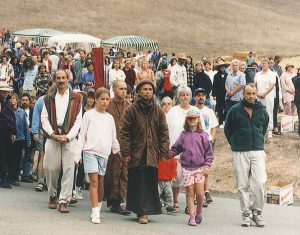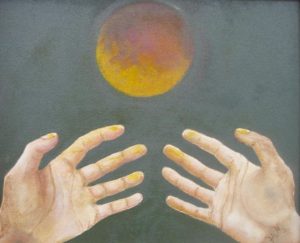 The Columbia City Yoga on-line Moving into Meditation class met this morning. We were inspired by naturalists, scientists, Zen teachers and poets all pointing to our embodied creatureliness. It is through our bodies, hearts and minds we perceive ourselves and the world around us; time and life’s unfolding mystery.
The Columbia City Yoga on-line Moving into Meditation class met this morning. We were inspired by naturalists, scientists, Zen teachers and poets all pointing to our embodied creatureliness. It is through our bodies, hearts and minds we perceive ourselves and the world around us; time and life’s unfolding mystery.
We drew on the wondrous work of David George Haskell: Sounds Wild and Broken. We head from the Emergence Magazine interview: Listening and the Crisis of Inattention. This is a conversation that “touches on the legacies of kinship that are present when we listen, and how deep experiences of beauty can serve as a moral guide for the future. ”
We heard cognitive neuroscientist Irena Arslanova’s descriptions of how our brain perceives time and how our body shapes how we experience it. She shares how our heartbeat influences whether we experience time moving fast or slow. Slowing down, moving mindfully, meditating are all ways we can access the insights Irena describes. This was from part 3 of a 4 part series How We Experience Time. You can hear the full show and journey through the senses.
 We heard from Jane Hirshfield’s Emergence Magazine interview, On Time, Mystery, and Kinship. In this endlessly fascinating discussion Jane and host Emanuel Vaughan-Lee explore time, attention, human need and kinship. Jane shares her personal experience of monastic life, householder practice, relational life and art making.
We heard from Jane Hirshfield’s Emergence Magazine interview, On Time, Mystery, and Kinship. In this endlessly fascinating discussion Jane and host Emanuel Vaughan-Lee explore time, attention, human need and kinship. Jane shares her personal experience of monastic life, householder practice, relational life and art making.
We heard Rosemerry Wahtola Trommer’s poem, In a Dangerous Time.
Welcome. In last week’s class we explored what it means to take refuge: we are drawn into relationship; we offer presence, care and support. Sometimes we take refuge in pilgrimage – a spiritual journey of transformation. We form relationships along the way. We negotiate conflict and build community. We learn about ourselves and one another. We are changed by these experiences.
Naturalist David Haskell writes about about how:
. . . life is about relationship and connection. Without connection, every living being withers and dies. And what does that connection entail? It involves the senses. How do we get food into our bodies? Through the sense of smell and taste and through tactile senses. How do we connect to one another as humans? Through spoken language, through music. How do we learn about the rest of the world? Through being embodied creatures.
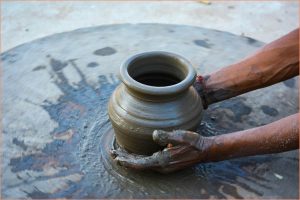 Being embodied creatures. This week I heard cognitive neuroscientist Irena Arslanova speak about our perception of time through embodiment. At some times we perceive time to be dragging and at other times we’re hardly aware of it. Our interoception – how the brain makes sense of the signals the body sends – enables the brain to make predictions. Irena believes “time is constructed in the brain, but it is molded by the body. “ She describes how the activity of the heart shapes the activity of the brain:
Being embodied creatures. This week I heard cognitive neuroscientist Irena Arslanova speak about our perception of time through embodiment. At some times we perceive time to be dragging and at other times we’re hardly aware of it. Our interoception – how the brain makes sense of the signals the body sends – enables the brain to make predictions. Irena believes “time is constructed in the brain, but it is molded by the body. “ She describes how the activity of the heart shapes the activity of the brain:
. . . the heart and the brain are in a constant rhythmic dance. Every time the heart contracts, it sends a signal to the brain, telling it to get ready for action. When the heart relaxes . . .the brain gets a chance to take in the world around it. So there’s a balancing between action and perception.
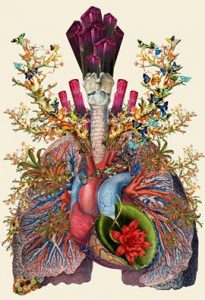 Our heart rate increases and we ready for action, time speeds up. When heart rate slows down we incline toward perception, time elongates. Being present or savoring experience tends to elongate time. Engaging in distracting activities or in something absorbing and fun can speed time up.
Our heart rate increases and we ready for action, time speeds up. When heart rate slows down we incline toward perception, time elongates. Being present or savoring experience tends to elongate time. Engaging in distracting activities or in something absorbing and fun can speed time up.
Our practice allows us to explore our relationship to time. How do we give ourselves the gift of time? When focusing on something slow or still – being in nature or gazing at a beautiful painting there may be a slowing of the heart and more expanded sense of time. The poet Jane Hirshfield reminds us:
Nothing in this world can be done well if you’re not paying attention. If you’re distracted, if you haven’t learned how to bring yourself in an immediate and wholehearted way into whatever it is you are distracted if you haven’t learned how to bring yourself in an immediate and wholehearted way into whatever it is you are doing, in a way, you don’t have your life; your life slips away from you like water you’re trying to hold in your hands. It is your attention that tells you to cup your fingers in a way that the water will stay in your hands long enough to lower your mouth and drink from them.
 Beautiful. This image of hands cupping water is so accessible, evocative. There are so many ways we grasp and hold experience. We can reflect and query. When does our grasping and holding morph into distraction? We get lost in distraction and we kill experience in struggle. How do we hold this experience called life? How do we experience these little moments – these heart beats of time?
Beautiful. This image of hands cupping water is so accessible, evocative. There are so many ways we grasp and hold experience. We can reflect and query. When does our grasping and holding morph into distraction? We get lost in distraction and we kill experience in struggle. How do we hold this experience called life? How do we experience these little moments – these heart beats of time?
In this poem Rosemerry Wahtola Trommer acknowledges we live “In a Dangerous Time.”
I think of the bones
of the unsung rib cage,
the way they protect
the heart. How bone,
too, is living, how it constantly
renews and remakes itself.
I think of how ribs engage
with other ribs
to expand, to contract,
and because they do
their solid work,
they allow the heart to float.
This is what I want to do:
to be a rib in this body
of our country,
to make a safe space for love.
There is so much now
that needs protection.
I want to be that flexible,
that committed to what’s vital,
that unwilling to yield.
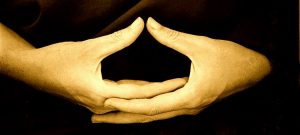 Even as we live in a dangerous time we can gift ourselves attention. Time flows through us all. Here, together, we intentionally choose how we will hold experience. We can cup our hands gently and breathe with ease.
Even as we live in a dangerous time we can gift ourselves attention. Time flows through us all. Here, together, we intentionally choose how we will hold experience. We can cup our hands gently and breathe with ease.
Take a breath. Let yourself be. Let the breath just come. Sometimes when thinking about the breath it feels like you’re doing. It takes a little time to let the doing sense settle down too.
Every now and then, relax whatever you can. Savor the feeling of ease as you become aware of it in an area of the body. Sense “how bone, too, is living . . . [renewing ] and [remaking] itself.” Legs and feet; around and within the pelvis; your upper back, shoulders, arms and hands; the area around the heart; neck and head.
Let yourself be. Embodied, at ease. Present in loving awareness. Perceiving. Experiencing. Sensing. Allowing. Experience and sensation, thought and sound. There may be memories, happy, sad, spontaneously arise and subside. When something surfaces ask “How am I with this?” There’s no need to struggle for an answer. Allow the question to be in the safe space of loving awareness, in feeling breathing.
 There may be stillness – like the rest between heart beats. No need to grasp it. Experience in the permeable cup of awareness like breathing receiving in-breath releasing out-breath. Sensing ribs engaging with other ribs. Expanding, contracting. Allowing the heart to float.
There may be stillness – like the rest between heart beats. No need to grasp it. Experience in the permeable cup of awareness like breathing receiving in-breath releasing out-breath. Sensing ribs engaging with other ribs. Expanding, contracting. Allowing the heart to float.
Rest inside the movements and sensations of the breath in your body. You might have a sense of the whole world breathing also. A ceaseless, gentle movement and flow in this safe space for love. Allow the whole world to be bathed and saturated in a kindly, loving breath—in and out.
We are embodied creatures. Experience is always now, the ever present. The unknown arises as life reveals itself. We begin to entrust ourselves to the ever present, to the mystery within us and all around us. Our practice is an invitation to hear and feel and touch the world. To sense ourselves as inter-beings. We are creatures of the past, alive in the present and forming the future. In our presence we make a safe space for love.

